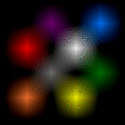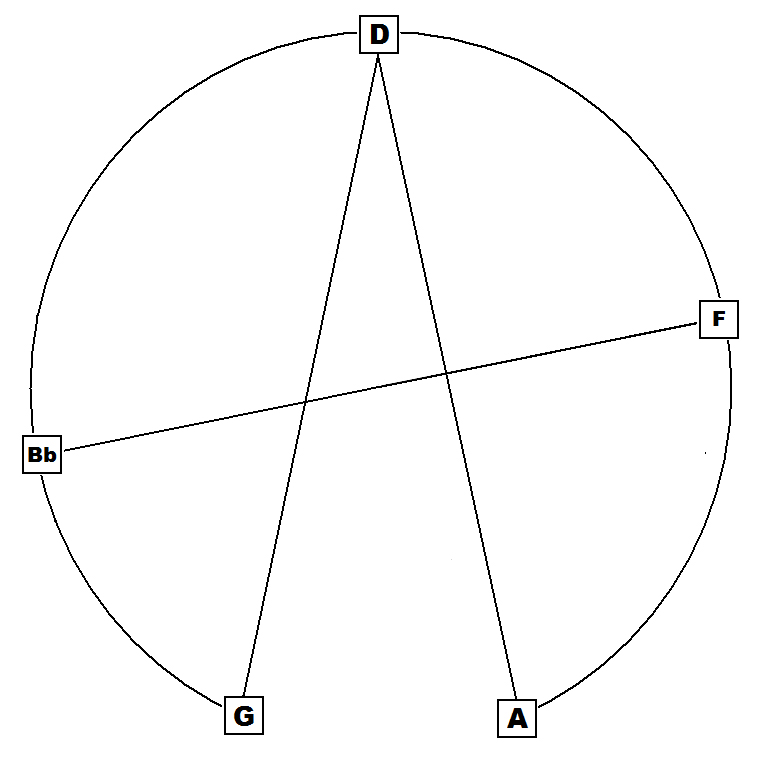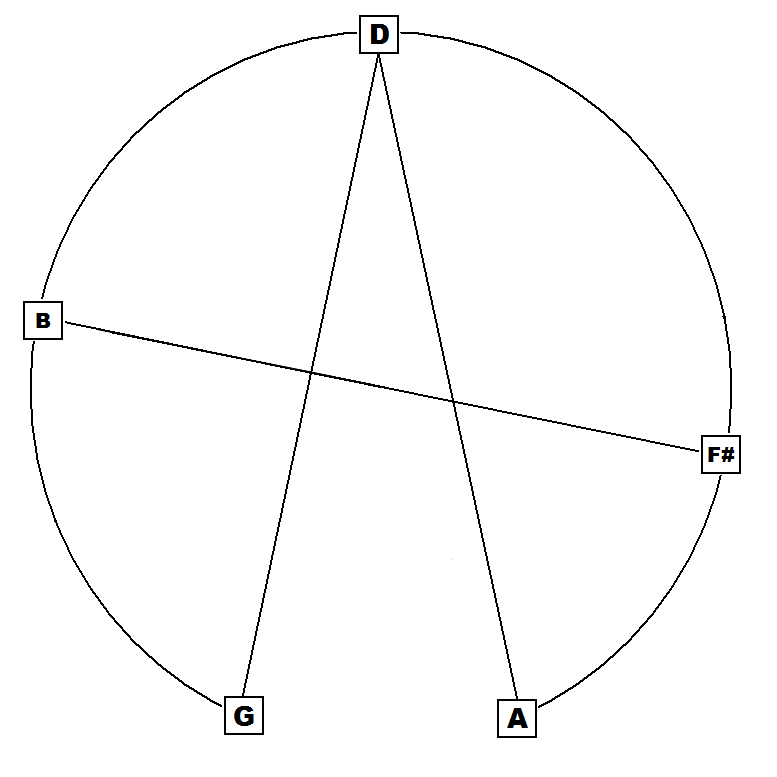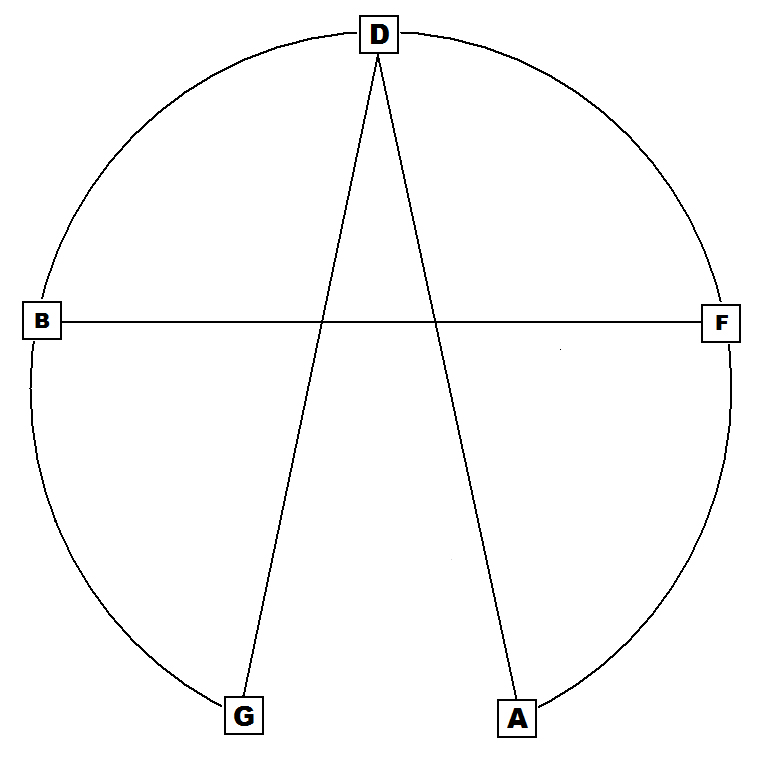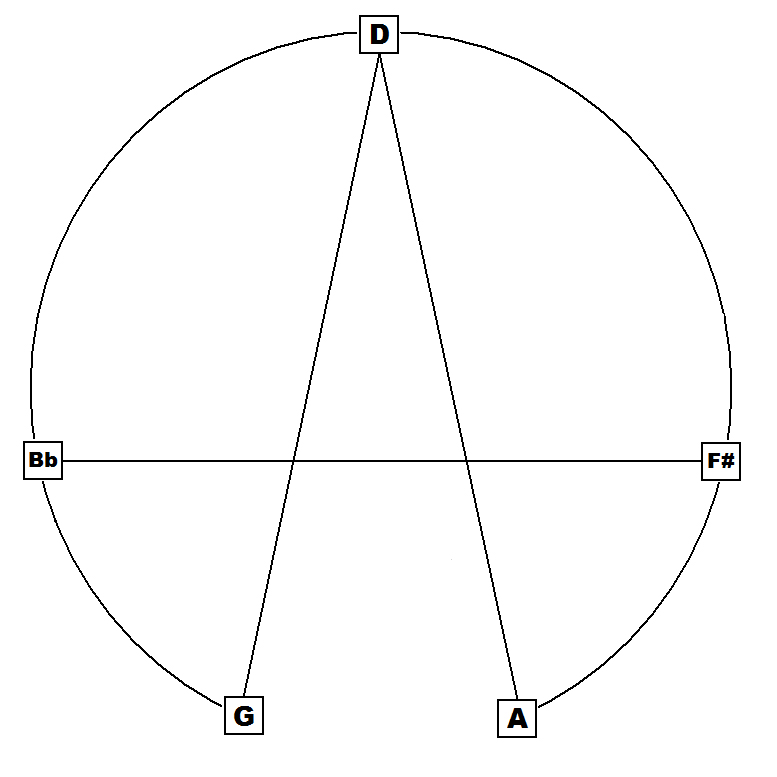To
submit a question, click here:
Perfect
Chords Type
of stable chord that can "stand alone" in isolation without
regard to either the previous or subsequent chord,
1-5, 3-7, 5-9, 7-#11, 9-13 or 1-5, b3-b7, 5-9, b7-11, 9-13
The Perfect Chords
RS
"not" RS
The
minor / Major Dichotomy
Of
all the possible five chord roots in this RS pentatonic set, A (A C E) and C (C E G)
Minor Triad and Major Triad Combined
The 9th chord and the mM9
The 9th chord The RS stacking pattern {M3 m3 | m3 M3} forms the "dominant" 9th chord:
Along with the 9th chordís RS and its intimate relationship with the natural harmonic series, it is also interesting because it has the complementary attributes of being capable of either acting as a force of tension for propelling forward circular motion [not stable] or simply remaining at rest [stable] (ie. its tritone can be regarded as either functional or non-functional [as with its little brother the 7th]).
The 9th chord may function as: Dominant V (major & composite minor) / Secondary Dominant (V of x), Or as the tonic of a mixolydian (for example).
Since this chord is not a member of the set of "perfect" chords, it is not categorized as "inherently" stable. Its dual nature prevents this anyway (unstable sometimes and stable sometimes).
The mM9 chord When encountering the "mM7" as a final chord in a piece, many jazz musicians interpret that symbol to mean "play a mM9". In Levineís "Jazz Theory" book (pg 77), he states that the R b3 5 7 9 (aka "mM9") are the characteristic notes of the jazz minor.
The mM9 chord (the 9th chordís "mirror", eg. {M3 m3 | m3 M3} vs {m3 M3 | M 3 m3}) is also not a perfect chord, so itís not "inherently" stable. There is, without a doubt, some "clashiness" within this chord. To many, the mM7 sounds harsher than the mM9. The presence of the 9th degree mellows out the clashes some.
Both the
9th and mM9 chords can be described as radially symmetric mirrored
triads,
Note the stable triads both top and bottom in all the above 4 structures.
The
First Level RS Quintal |
The unifying factor in this remarkable family of four-interval tertian chord structures is the two conjoined stacked P5s quintal. The
only variables are the permutations of the respective qualities of
the thirds and sevenths that can be inserted into the underying stable
quintal foundation.
The radially symmetrical stable quintal formed by the two conjoined P5s (G-D | D-A) greatly contributes to the perceived relative stability of the 9th and mM9 chords.
Alternate
Visualization
To submit a question, click here.
MODALOGY.NET
© MMXI |
|||||||||||||||||||||||||||||||||||||||||||||||||||||||||||||||||||||||||||||||||||||||||||||||||||||||||||||||||||||||||||||||||||||||||||||||||||||||||||||||||||||||||||||||||||||||||||||||||||||||||||||||||||||||||||||||||||||||||||||||||||||||||||||||||||||||||||||||||||||||||||||||||||||||||||||||||||||||||||||||||||||||||||||||||||||||||||||||
